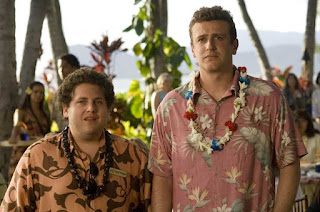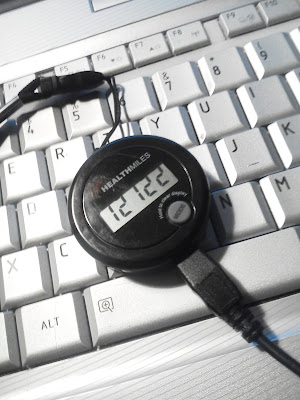The Real Fear
I grew up on the eastern half of the state, a land of wind, humidity ... and for some reason, lots of ice. My extreme weather memories seem to revolve around ice storms cancelling school in the fall and winter and thunderstorms spawning tornadoes in the spring and summer. Moving to the Hills was a break from some of that (tornadoes in particular are quite rare around these parts) but there was a trade-off.
 The Black Hills are adjacent to the Badlands, a small patch of desert between miniature mountains and the prairie that most people picture when you say South Dakota. Thanks to this desert -- and all the weird weather that surrounds mountain ranges -- this area of the state tends to be quite dry. Summertime humidity is often below 50% (and in particularly dry years, mostly under 20%), rain is usually fairly infrequent, and snow cover rarely lasts.
The Black Hills are adjacent to the Badlands, a small patch of desert between miniature mountains and the prairie that most people picture when you say South Dakota. Thanks to this desert -- and all the weird weather that surrounds mountain ranges -- this area of the state tends to be quite dry. Summertime humidity is often below 50% (and in particularly dry years, mostly under 20%), rain is usually fairly infrequent, and snow cover rarely lasts.
The last two winters aside, that is.
This year seems to be a return to what I'd call normal, and with that comes an early return to our general summer fear: wildfire.
Fire is a fear for a lot of forested areas and we are no exception. It is an all-consuming risk, one that can strike with little warning and get out of control before anyone has had a real chance to react. And it can destroy everything in its path.
Easily.
Some of this is our own fault. Areas like the Black Hills used to burn on a regular basis -- lower temperature, sweeping fires that mostly served to clear the underbrush naturally and did much less damage to the hardier, middle-aged trees. As we moved into these areas, we weren't fans of our mostly-built-of-wood houses burning down and did whatever we could to keep those fires down and out. In the process, we let forests grow to the point where when they burn, they burn higher, hotter, and more out of control. Decades passed before we realized the damage we had done; now there are attempts to mimic nature with prescribed burns and manual labor.
It's been slow going but we caught on. And it's getting better. Sometimes.
After all, as people moved into these areas we introduced other things: rampant flame sources. Besides nature's best lighter (lightning storms), we've got our own abilities. Power lines crisscross the Hills and are known to throw sparks when it gets too windy. We have vehicles that can also spark fires. Construction work. Not-quite-out cigarettes. Grills, backyard barbeques, fire pits, and illegal-but-stupidly-still-present fireworks.
We're pretty darn good at starting fires.
There are, of course, safety measures in place. Burn bans go into effect easily and are enforced. Fire breaks (significant gaps) are cut around property and into areas where access could be an issue. Trails are largely designated for non-motorized-vehicles for damage, pollution and fire control factors. Driving around the Hills, you'll see where private property owners have chosen to use more flame-resistant metal roofing. And there are always, always people thinning trees, cleaning up dry brush, and trying to control overgrowth -- the manual labor that's taken the place of the large, lower-temperature burns.
That doesn't prevent everything. Many folks you talk to have contingency plans in place, secondary exits if a road gets blocked, and meeting places for family if an area is evacuated. As summer gets closer, people will have designated containers to grab on the way out -- "fire boxes" with important documents, changes of clothes, and possibly some of those sentimental items you can't imagine being without.
Heck, this is part of the reason I keep certain things in my car.
Furthermore, no part of the Hills is exempt. Talk to the locals in any given area and odds are a fire can be named -- the year it happened, how many acres it covered, the people affected. Like hurricanes in other places, we mark time by when that hill burned, or when that family lost their ranch, or when that town nearly went up.
Our first major event of this year -- the confusingly named Cold Fire -- started almost two weeks ago and burned close to 2,000 acres (or 3 square miles, if that's more your style) before it was totally contained. The cause? Still unknown. It's been dry and unseasonably warm ... and then the wind came up just in time to whip everything into a frenzy and make a fairly small fire much more scary.
Fires in April aren't entirely uncommon, but they don't bode well for the season to come. After two surprisingly wet summers, I anticipate a ban on campfires and a lot fewer s'mores this year.
That, or a big snowstorm in May to reestablish some balance.
Smokey Bear has his own website. Included there is a link to the official wildfire map. Keep Oklahoma in your thoughts, guys.
 The Black Hills are adjacent to the Badlands, a small patch of desert between miniature mountains and the prairie that most people picture when you say South Dakota. Thanks to this desert -- and all the weird weather that surrounds mountain ranges -- this area of the state tends to be quite dry. Summertime humidity is often below 50% (and in particularly dry years, mostly under 20%), rain is usually fairly infrequent, and snow cover rarely lasts.
The Black Hills are adjacent to the Badlands, a small patch of desert between miniature mountains and the prairie that most people picture when you say South Dakota. Thanks to this desert -- and all the weird weather that surrounds mountain ranges -- this area of the state tends to be quite dry. Summertime humidity is often below 50% (and in particularly dry years, mostly under 20%), rain is usually fairly infrequent, and snow cover rarely lasts.The last two winters aside, that is.
This year seems to be a return to what I'd call normal, and with that comes an early return to our general summer fear: wildfire.
Fire is a fear for a lot of forested areas and we are no exception. It is an all-consuming risk, one that can strike with little warning and get out of control before anyone has had a real chance to react. And it can destroy everything in its path.
Easily.
Some of this is our own fault. Areas like the Black Hills used to burn on a regular basis -- lower temperature, sweeping fires that mostly served to clear the underbrush naturally and did much less damage to the hardier, middle-aged trees. As we moved into these areas, we weren't fans of our mostly-built-of-wood houses burning down and did whatever we could to keep those fires down and out. In the process, we let forests grow to the point where when they burn, they burn higher, hotter, and more out of control. Decades passed before we realized the damage we had done; now there are attempts to mimic nature with prescribed burns and manual labor.
It's been slow going but we caught on. And it's getting better. Sometimes.
After all, as people moved into these areas we introduced other things: rampant flame sources. Besides nature's best lighter (lightning storms), we've got our own abilities. Power lines crisscross the Hills and are known to throw sparks when it gets too windy. We have vehicles that can also spark fires. Construction work. Not-quite-out cigarettes. Grills, backyard barbeques, fire pits, and illegal-but-stupidly-still-present fireworks.
We're pretty darn good at starting fires.
There are, of course, safety measures in place. Burn bans go into effect easily and are enforced. Fire breaks (significant gaps) are cut around property and into areas where access could be an issue. Trails are largely designated for non-motorized-vehicles for damage, pollution and fire control factors. Driving around the Hills, you'll see where private property owners have chosen to use more flame-resistant metal roofing. And there are always, always people thinning trees, cleaning up dry brush, and trying to control overgrowth -- the manual labor that's taken the place of the large, lower-temperature burns.
That doesn't prevent everything. Many folks you talk to have contingency plans in place, secondary exits if a road gets blocked, and meeting places for family if an area is evacuated. As summer gets closer, people will have designated containers to grab on the way out -- "fire boxes" with important documents, changes of clothes, and possibly some of those sentimental items you can't imagine being without.
Heck, this is part of the reason I keep certain things in my car.
Furthermore, no part of the Hills is exempt. Talk to the locals in any given area and odds are a fire can be named -- the year it happened, how many acres it covered, the people affected. Like hurricanes in other places, we mark time by when that hill burned, or when that family lost their ranch, or when that town nearly went up.
Our first major event of this year -- the confusingly named Cold Fire -- started almost two weeks ago and burned close to 2,000 acres (or 3 square miles, if that's more your style) before it was totally contained. The cause? Still unknown. It's been dry and unseasonably warm ... and then the wind came up just in time to whip everything into a frenzy and make a fairly small fire much more scary.
Fires in April aren't entirely uncommon, but they don't bode well for the season to come. After two surprisingly wet summers, I anticipate a ban on campfires and a lot fewer s'mores this year.
That, or a big snowstorm in May to reestablish some balance.
Smokey Bear has his own website. Included there is a link to the official wildfire map. Keep Oklahoma in your thoughts, guys.


Comments